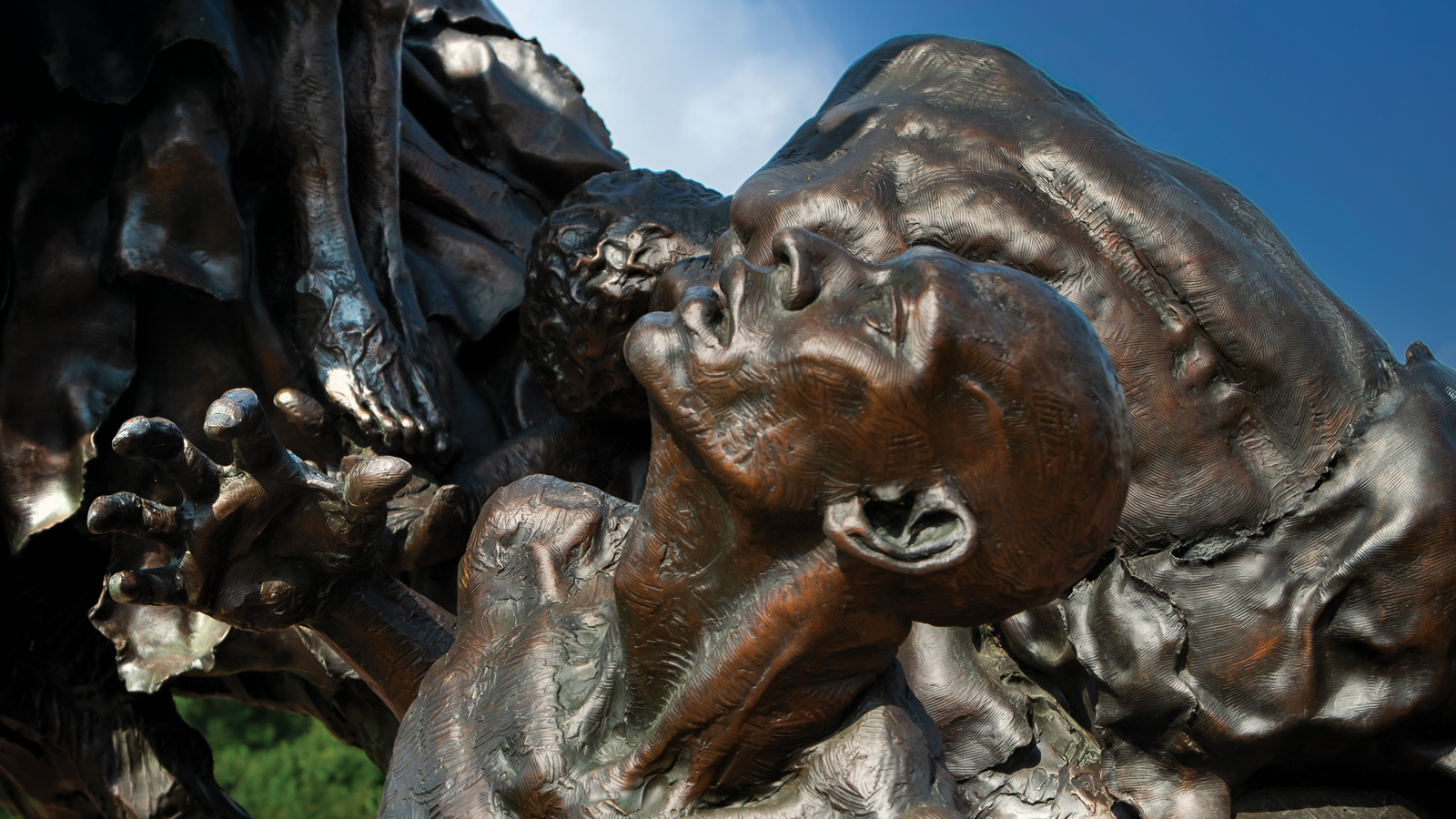Monumental Change
January 28, 2019

America’s memorials to slavery and its victims have lived quiet lives in public places. A Maryland professor is traveling the country to learn their stories.
By Sala Levin ’10 | Photos By Stephanie S. Cordle | Terp Magazine
A few steps off busy South Washington Street in Alexandria, Va., where the roar of traffic demands that conversation be held at a raised pitch, is a statue depicting a towering series of men and women cast in bronze. Mario Chiodo’s “The Path of Thorns and Roses” represents the anguished path from slavery to freedom—emphasis on the anguish. Even the toes of the bodies, twisted and half-clothed, are bent in agony.
Several yards away, the 2014 memorial extends to an open room-like structure. Its Virginia limestone walls bear the names of escaped slaves and free African-Americans, some not even a week old, buried in the Contrabands and Freedmen Cemetery that the memorial crowns.
Renee Ater Ph.D. ’00, associate professor emerita of art history, believes such a memorial can help heal a community. She brushes cobwebs from its crevices, noting, with surprise, that this is the first time she’s been here without seeing flowers laid at its feet. For nearly 150 years, this monument perched atop a small hill would have been almost unimaginable. Memorials to slavery and its victims—reminders of suffering and a nation’s shame, not battlefield glory—are, by and large, no more than two or three decades old.
Read the complete feature in Terp Magazine.

